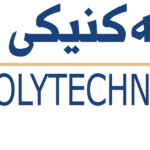- Safar Maghdid Asaad
- safar.asaad14@gmail.com
- +9647501206882
-
In the Internet of Things (IoT) era, tracking humans’ daily life activities has faced a remarkable transformation, especially in terms of indoor positioning. Similarly, wireless positioning technologies, including Wi-Fi and LoRa, have been employed as an alternative to Global Navigation Satellite System (GNSS) technologies for indoor tracking. Wi-Fi and LoRa positioning frequently employs the received signal strength indicators (RSSI) of the Wi-Fi and LoRa signals. However, the RSSI-based approachs suffer from Multipath, Non-Line-Of-Sight (NLOS), and fluctuating RSSI measurements via Wi-Fi and LoRa chipsets. When these issues have the direct impact on the accuracy and reliability of the positioning techniques. In addition, the fingerprinting procedure is one of the most widely known positioning methods for RSSI- based techniques. Due to the absence of a stable matching algorithm, the fingerprinting-based method has an additional issue.
There are a number of matching algorithms, for example, weighted k- nearest neighbour (WkNN), k-mean clustering, decision tree, and deep learning algorithms such as Long-Short-Term Memory (LSTM). Two algorithms are proposed in this study to provide adequate positioning services.
The first algorithm is a novel integrated matching algorithm for Wi-Fi fingerprint-positioning technique, which is known as Norm_MSATE_LSTM, as a means of mitigating the drawbacks of the RSSI-based fingerprinting method. It is based on the Wi-Fi fingerprinting and proposed augmentation techniques with considering LSTM as a matching technique. To address the problem of a large number of RPs/classes in the LSTM, we first conduct the augmentation process to boost the RSSI data records using the Mean Standerd deviation Augmentation TEchnique (MSATE). The RSSI data are normalised (Norm), and the long short-term memory (LSTM) method is used to estimate the accurate positions. Finally, the recommended matching algorithm is compared with the stand-alone matching algorithms, including weighted k- nearest neighbours (WkNN) and LSTM.
The second algorithm is the hybrid positioning technique using existing Wi-Fi and LoRa technologies, which is known as Wi-Lo, and it is aimed at improving the outcomes of the first suggested algorithm. This one is based on the combination of the Wi-Fi and LoRa technologies and considering MM and trilateration techniques to provide seamless positioning from outdoor to indoor via building identifications. The approach is divided into two phases. The LoRa RSSI is used to identify buildings in the first phase. The second phase is known as Wi-Lo, and it combines LoRa and Wi-Fi technologies to improve Norm_MSATE_LSTM positioning accuracy outcomes.
Experiments and simulated investigations indicate that the proposed matching algorithm, Norm_MSATE_LSTM, may increase positioning accuracy of the LSTM by 45.83% and 72% when only augmentation and augmentation with normalisation are applied, respectively. On the other hand, the proposed Wi-Lo can increase the first algorithm’s accurate by 39.74% in terms of the positioning improvement.
- Erbil Technical Engineering College
- Information Systems Engineering
- سليم سليم حسين
- Zana4kral@gmail.com
-
تهدف الدراسة الى بيان أثر القياس والإفصاح المحاسبـي وفق متطلبات المعيار المحاسبـي الدولي (– )IAS8
السياسات المحاسبـية والتغيرات في التقدير ات المحاسبـية والأخطاء- في تعزيز جودة التقارير المالية، ولتحقيق أهداف
الدراسة واختبار فرضياتها تم الاعتماد على استمارة الاستبانة، إذ تم استطلاع اَراء الأكاديميين والمحاسبـين القانونيين
والمحاسبـين العاملين في الشركات في مدينة أربيل حول الموضوع، وتم اختيار ( )210فرداً منهم. وقد اعتمدت
الدراسة على أسلوب التحليل الإحصائي الوصفي وتحليل متغيرات الدراسة واختبار فرضياتها باستخدام برنامج
الحزمة الإحصائية للعلوم الاجتماعية ( .)SPSSوقد توصلت الدراسة الى مجموعة من الاستنتاجات: أهمها إن
القياس والافصاح المحاسبي في القوائم المالية وفقاً لما يتطلبه المعيار المحاسبي الدولي ( )IAS8يخدم مستخدمى هذة
التقارير لإنه يدل على العرض العادل لمحتويات هذه القوائم ويساعد على فهم الأداء المالي، وسيكون لكل ذلك تأثير
كبير في تحسين قرارت المستخدمين، لإن المعلومات المحتواه في القوائم المالية تعد المصدر الاساس لإي قرار يتخذ من
قبل المستخدم، وإن الهدف الاساس لكافة أنواع الافصاح هو اظهار المعلومات المحاسبية الملائمة في القوائم المالية
للمستخدمين وذلك لمساعدتهم في اتخاذ قرارات صحيحة. يوصى الباحث الوحدات الاقتصادية في إقليم كوردستان
بضرورة إعداد وعرض التقارير المالية وفق متطلبات المعيار المحاسبي الدولي ( )IAS 8المتعلق السياسات المحاسبية
والتغيرات في التقديرات المحاسبية والأخطاء كي تكون المعلومات الواردة في التقارير المالية بدرجة عالية من الدقة
والشفافية التي بدورها تساعد مستخدمي التقارير المالية على اتخاذ القرارات الصائبة - Erbil Technical Administrative College
- accountant
- Ali Dilshad Nuraddin
- ali.dilshad@tiu.edu.iq
- 0750 406 7347
- MASTER THESIS last update all
-
Re-vibration, which is the process of repeating the operation of vibration of fresh concrete after a time interval, may be useful to enhance the mechanical properties of concrete (compressive strength, tensile strength, flexural strength, and modulus of elasticity), and also to get the maximum applied load, first crack load, deflection at mid span, stiffness and strain, particularly when successive layers of fresh con[1]rete were placed and the upper layer of fresh concrete was partially hardened. After a period of time, the aggregate particles are rearranged by the re-vibration process, and any trapped water is removed, potentially enhancing the concrete's compressive and tensile strengths. The use of re-vibration can help to remove plastic shrinkage cracks for exposed concrete. The amount of time that re-vibration lasts has a big impact. Using the re-vibration technique in construction of structural members is expected to improve the structural properties of the beams, and cracking. The effect of the waiting time before re-vibration must be investigated and time duration of vibrations on the structural response of flexural reinforced concrete beams to establish and verify the best process to apply this technique. The purpose of this study is to examine the impact of waiting time before re-vibration. and variable time duration for vibration and re-vibration operation of structural response for flexural reinforced concrete beams and using Ordinary Portland Cement-type 1, with w/c ratio of 0.4, and a greater number of re-vibration time lag intervals ranging from half an hour to two hours to evaluate the impact of re-vibration on the mechanical properties of concrete with different time duration of vibrations ranging from 15 to 60 seconds. The experimental schedule includes a total of 28 twenty-eight rectangular rein[1]forced concrete beams of dimension (125 mm x 250 mm) and length of 1500 mm was prepared for this work. Which were classified into seven groups Each group includes four samples. Beams for group (A, B, C, D, E and F) reinforced with longitudinal top reinforcement of (2ø10mm) and bottom reinforcement of (2ø12mm) with transvers reinforcement (Stirrups) ø12mm all over the beams except group F which are without transverse reinforcement and group G is without longitudinal and transverse reinforcement. Additionally, 144 cylinders with dimensions of 300 mm in height and 150 mm in diameter were utilized to evaluate the concrete's compressive and tensile strengths. After 56 days, these samples were analyzed in an attempt to study the impacts of vibration, and the effect of re-vibration delay and vibration duration on the development of concrete strength. The results have shown that the mechanical properties of concrete, ultimate load, first crack load and deflection at mid-point with various time duration and re- vibration techniques was increased for the 1st one hour and re-vibrated for 45 seconds time duration. After that for waiting time 1.5 and 2 hours and re-vibrated for 60 seconds was decreased.
- Erbil Technical Engineering College
- civil engineering
- structural
- ibrahim shamal abdulkhaleq
- ibrahim.abdulkhaliq@epu.edu.iq
- 0750 749 7686
- AFTER_EDIT_LAST_LAST (1)
-
In the rapidly evolving landscape of online content, the prevalence of clickbait poses a significant challenge for users seeking reliable and informative material. Clickbait, characterized by sensationalized headlines designed to attract attention and drive user engagement, has become a pervasive issue in various languages and cultural contexts. As digital platforms continue to host a vast array of content, the need for robust clickbait detection mechanisms becomes paramount to ensure a trustworthy online experience. This study aims to evaluate the performance of deep neural networks in clickbait detection for both English and Kurdish languages. To address clickbait in Kurdish, we collected 10,000 news articles from various Kurdish platforms, complemented by a dataset of 32,000 English headlines curated by Chakraborty. Utilizing Long Short-Term Memory (LSTM), Bidirectional Long Short-Term Memory (BILSTM), Convolutional Neural Network (CNN), Gated Recurrent Unit (GRU), and a hybrid CNN BILSTM model, we evaluated clickbait detection techniques. Findings underscore the importance of understanding language-specific traits and cultural norms in spotting clickbait across linguistic boundaries. The Bidirectional Long Short- Term Memory algorithm proved most effective in English, boasting a 99.23% accuracy rate, 95.33% precision, 94.33% recall rate, and a 95% F1 score. In Kurdish, the Gated Recurrent Unit algorithm excelled with a 93.93% accuracy rate, 93.13% precision, 95.17% recall rate, and a 94.13% F1 score. This study extends the application of recurrent neural network and deep learning methods in clickbait detection, showcasing their potential in analyzing textual data with nuanced semantic features, contributing valuable insights to the broader field of natural language processing.
- Erbil Technical Engineering College
- Information Systems Engineering
- Machine Learning



